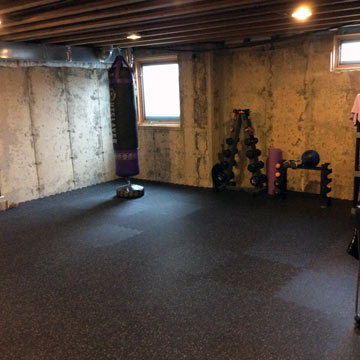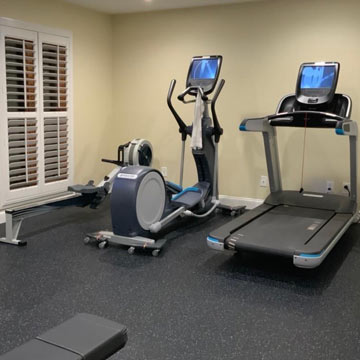Can You Install Rubber Flooring Over Radiant Heat?
Related Product: Rubber Flooring Roll Geneva 3/8 Inch 10% Color Per SF
- Will a Roll of Rubber Be a Good Choice in a Heated Floor Room?
- How Does Rubber Flooring Over Radiant Heat Work With a Rubber Mat?
- Can I Use Interlocking Rubber Tiles With a Radiant Heat Floor?
- What Types of Flooring Work for Installing Over Radiant Heat Floors?
Rubber flooring over radiant heat works extremely well for almost any kind of planned layout. Rubber will transfer the heat slowly from the floor into the room, eventually creating the desired level of warmth.
Understand that certain types of rubber flooring over radiant heat may slightly contract or expand, based on the changing temperatures. In a type of precise flooring installation where this slight expansion and contraction will cause issues, customers may want to avoid rubber.
However, for most installers, the slight changes that rubber will undergo in this use case won’t be noticeable. This makes rubber flooring over radiant heat a cost effective choice that delivers excellent durability and good traction.
Will a Roll of Rubber Be a Good Choice in a Heated Floor Room?
Rubber rolls have a low cost per square foot, making them ideal for a variety of installations, including as rubber flooring over radiant heat. The Geneva Rubber Flooring Roll works nicely with a radiant heat floor, as it measures only 3/8 inches in thickness, which facilitates the transfer of heat better than a thicker roll would.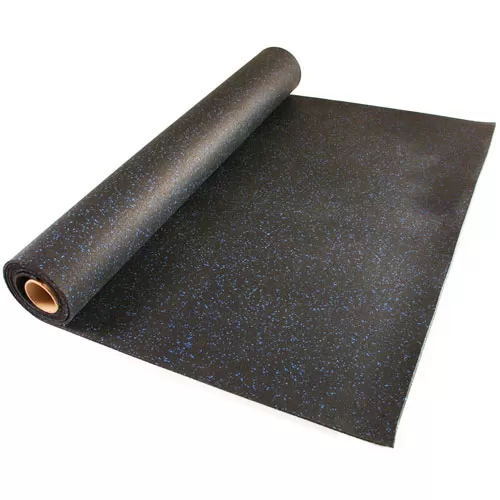
When making use of a rubber roll in this type of use case, it is important to stick with a high quality roll that uses the purest materials. An impure rubber roll may generate odor as it heats up atop the radiant flooring. This Geneva Rubber Roll is American made, allowing customers to trust the manufacturing process.
Can I Use Interlocking Rubber Tiles With a Radiant Heat Floor?
Rubber interlocking tiles work nicely when people are seeking a durable type of floor to place over the top of a radiant heat system. The layout of the interlocked tiles doesn’t require glue, which simplifies installation.The primary drawback to using interlocking rubber tiles for this use case is the possibility of expansion and contraction. The slight change in the tile’s size from the temperature change could cause a temporary buckling of the interlock system. However, this rarely occurs.
The 8 mm Interlocking Rubber Floor Tiles are thin enough to allow the heat to move through the rubber. With only 5/16 inches of thickness, the heat with this tile should move into the room quicker than with thicker rubber flooring over radiant heat.
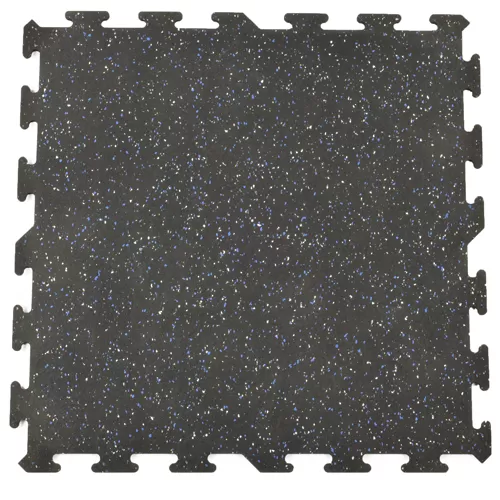
This is a high quality type of American made rubber tile, which reduces the possibility of the release of odors as it heats up from the radiant floor.
For those who need a far thicker rubber tile for sound absorption, the 2.75 Inch Sterling Athletic Rubber Tile is a strong contender. These tiles are extremely durable. They interlock tightly without the need for adhesive.
However, at 2.75 inches in thickness, the heat from the floor will not move through this thick material efficiently.
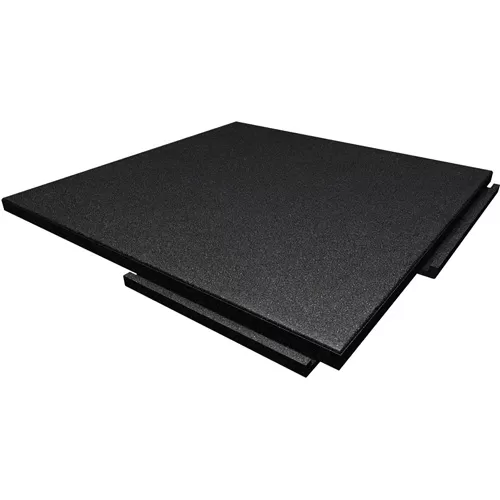
What Types of Flooring Work for Installing Over Radiant Heat Floors?
Beyond using rubber flooring over radiant heat, a few other flooring materials are usable with this type of layout.- Porcelain or ceramic: Hard styles of flooring, like a porcelain tile, will do the best job to transfer the heat from the concrete radiant flooring into the room. However, these floorings are extremely expensive and fragile versus rubber and other materials.
- Foam tiles: Foam is safe to use with a heated floor. However, foam is more of an insulative material than a material that would transfer heat, so installing foam tiles over the radiant heat flooring will block some of the heat, making the system less efficient. They will also have more tendency to expand and contract.
- Carpet: Carpet is a safe material to use over radiant heat, but because it usually requires a foam layer under it, this blocks some of the heat transfer. Consider a carpet tile over the top of a raised plastic base for the best results with an electric radiant heat floor.


